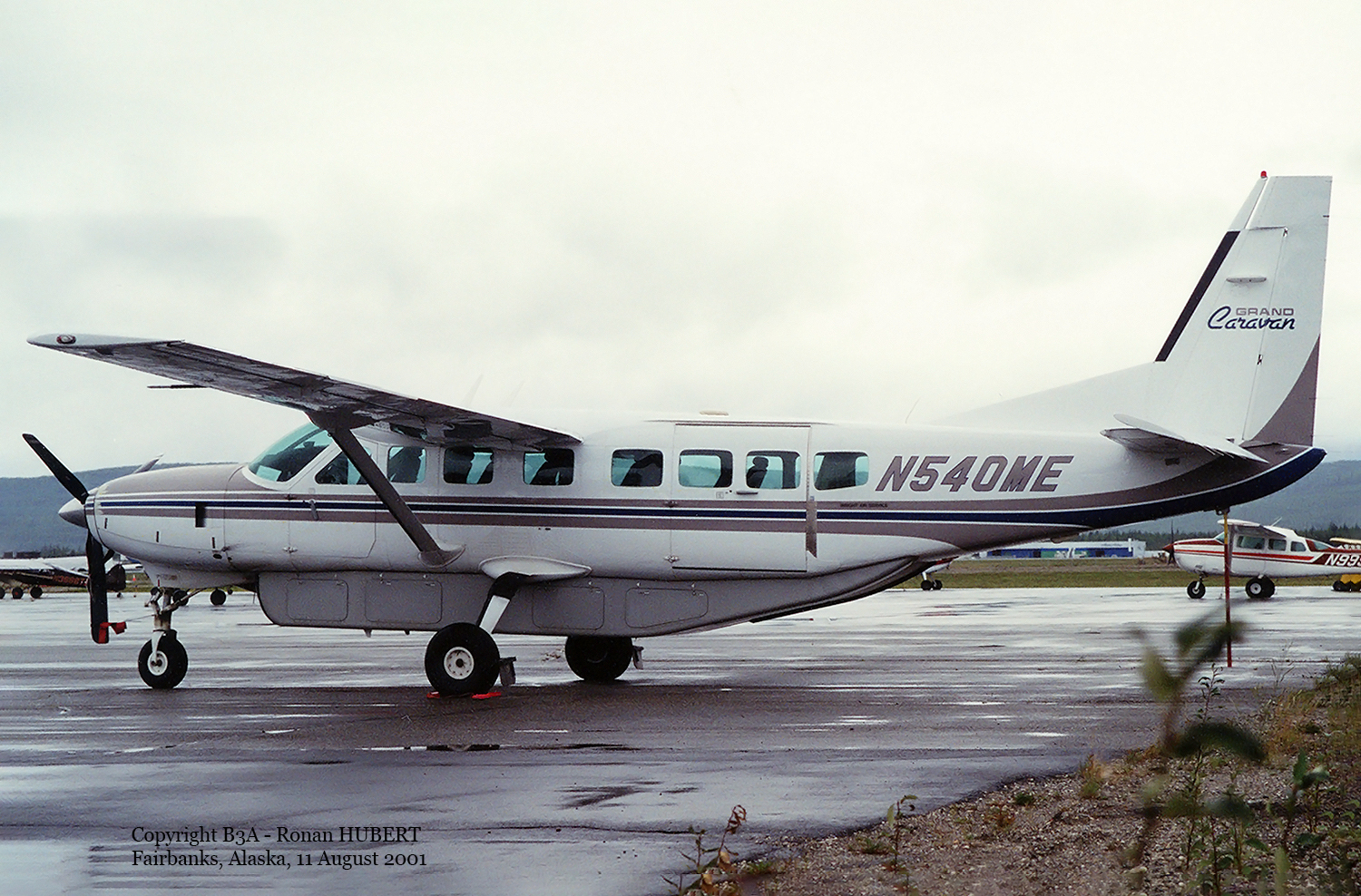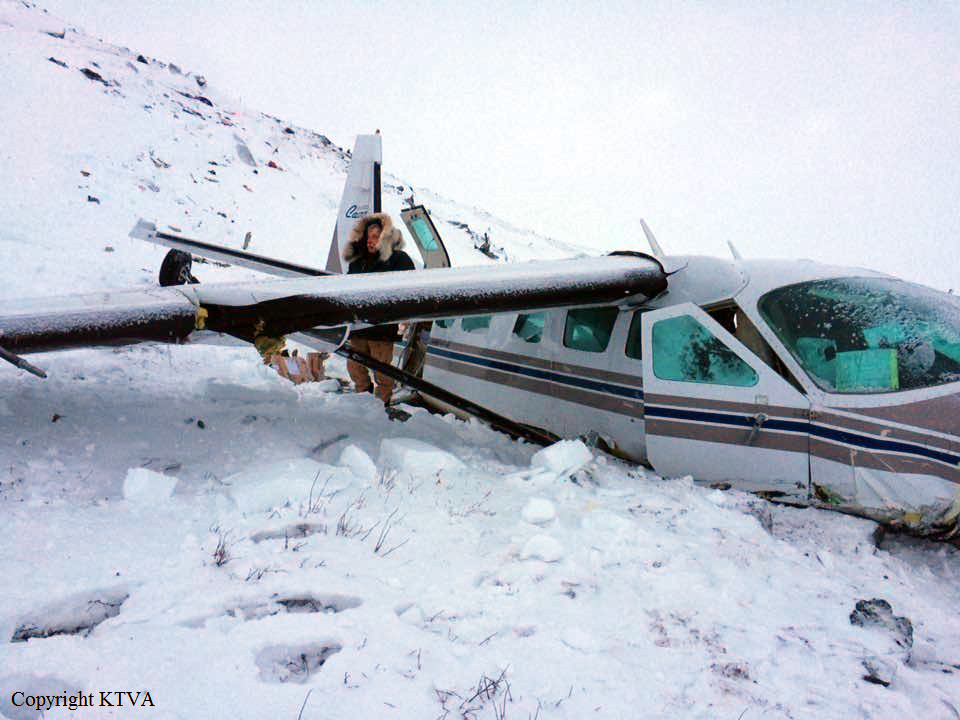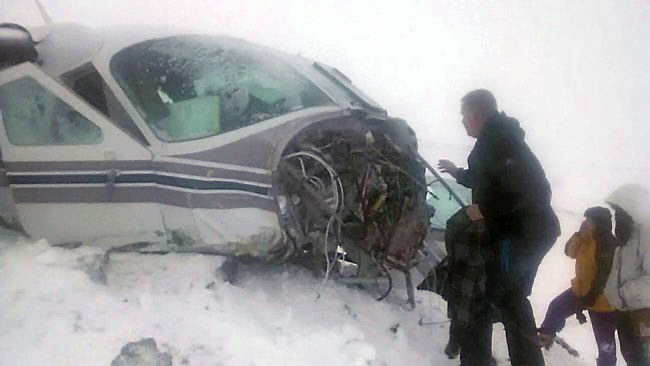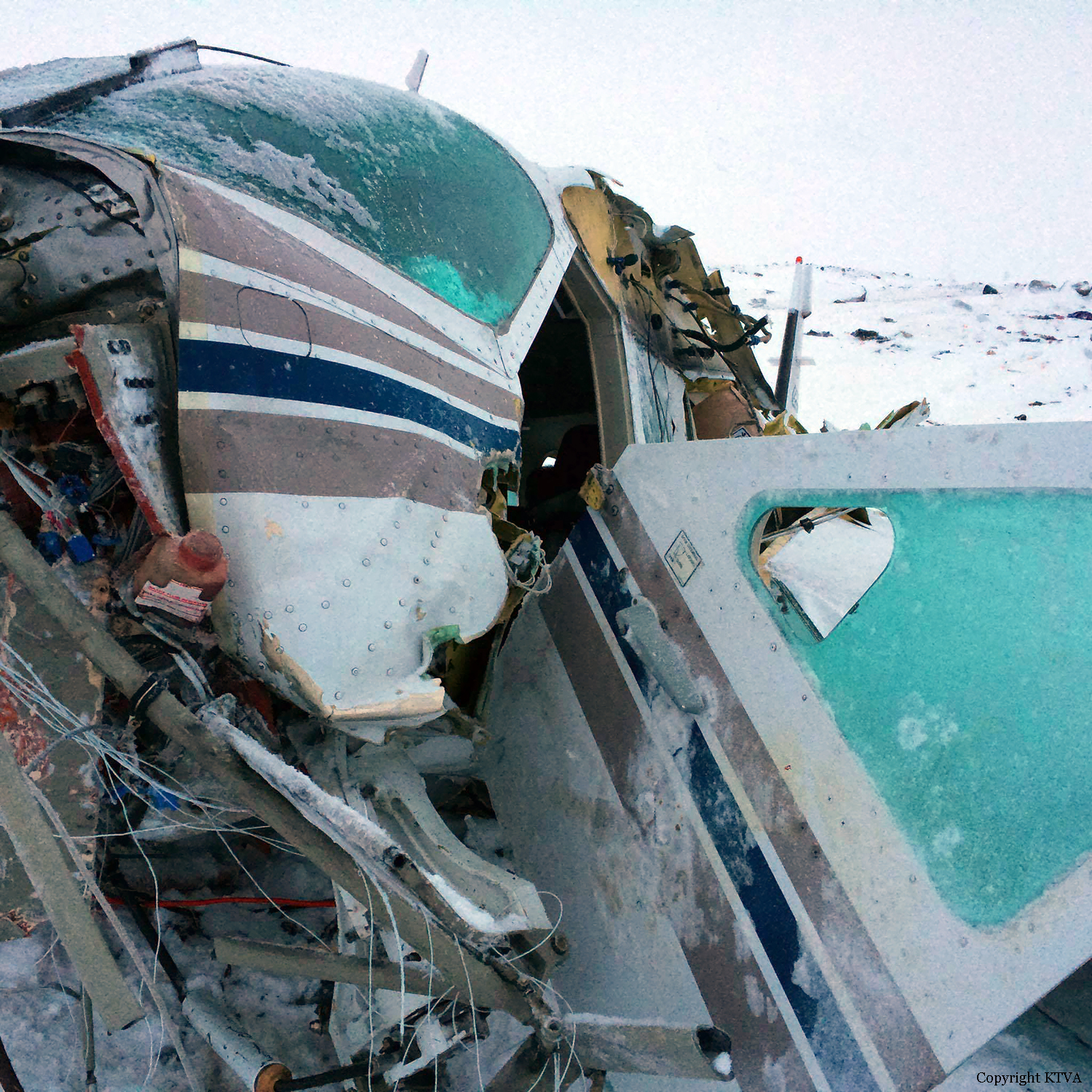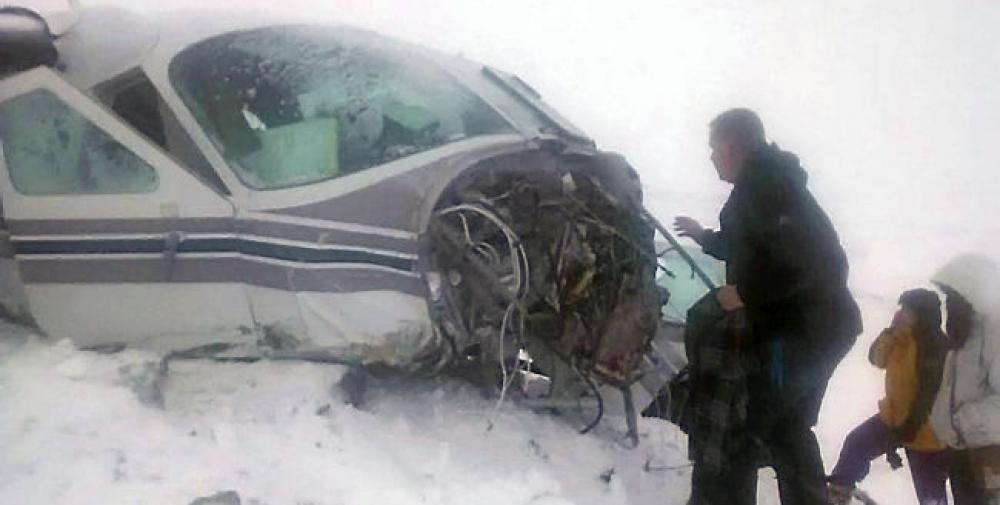Date & Time:
Jan 2, 2016 at 1205 LT
Type of aircraft:
Cessna 208B Grand Caravan
Registration:
N540ME
Flight Phase:
Flight
Flight Type:
Charter/Taxi (Non Scheduled Revenue Flight)
Survivors:
Yes
Site:
Mountains
Schedule:
Fairbanks - Anaktuvuk Pass
MSN:
208B-0540
YOM:
1996
Country:
United States of America
Region:
North America
Crew on board:
1
Crew fatalities:
0
Pax on board:
7
Pax fatalities:
0
Other fatalities:
0
Total fatalities:
0
Captain / Total hours on type:
4142
Aircraft flight hours:
19555
Circumstances:
The airline transport pilot was conducting a scheduled passenger flight in an area of remote, snow-covered, mountainous terrain with seven passengers on board. The pilot reported that, after receiving a weather briefing, he chose to conduct the flight under visual flight rules (VFR). While en route about 10,000 ft mean sea level (msl), the visibility began "getting fuzzy." The pilot then descended the airplane to 2,500 ft msl (500 ft above ground level) to fly along a river. When the airplane was about 10 miles southwest of the airport, he climbed the airplane to about 3,000 ft msl in order to conduct a straight-in approach to the runway. He added that the visibility was again a little "fuzzy" due to snow and clouds, and that he never saw the airport. The pilot also noted that the flat light conditions limited his ability to determine his distance from the surrounding mountainous, snow-covered terrain. Shortly after climbing to 3,000 ft msl, the airplane collided with the rising terrain about 6 miles southwest of the airport. Another pilot, who had just departed from the airport, confirmed that flat light and low-visibility conditions existed in the area at the time of the accident. Further, camera images of the weather conditions recorded at the airport showed that, although conditions were marginal VFR at the surface at the time of the accident, there was mountain obscuration and reduced visibility due to light snow and clouds along the accident flight path and that the worst conditions were located along and near the higher terrain. The pilot reported no preimpact mechanical malfunctions or failures with the airplane that would have precluded normal operation. It is likely that that the pilot encountered flat light and low-visibility conditions as he neared the airport at 3,000 ft msl while operating under VFR and that he did not see the rising, snow-covered mountainous terrain and subsequently failed to maintain clearance from it.
Probable cause:
The pilot's continued flight into deteriorating, flat light weather conditions, which resulted in impact with mountainous, snow-covered terrain.
Final Report:
N540ME.pdf120.21 KB
